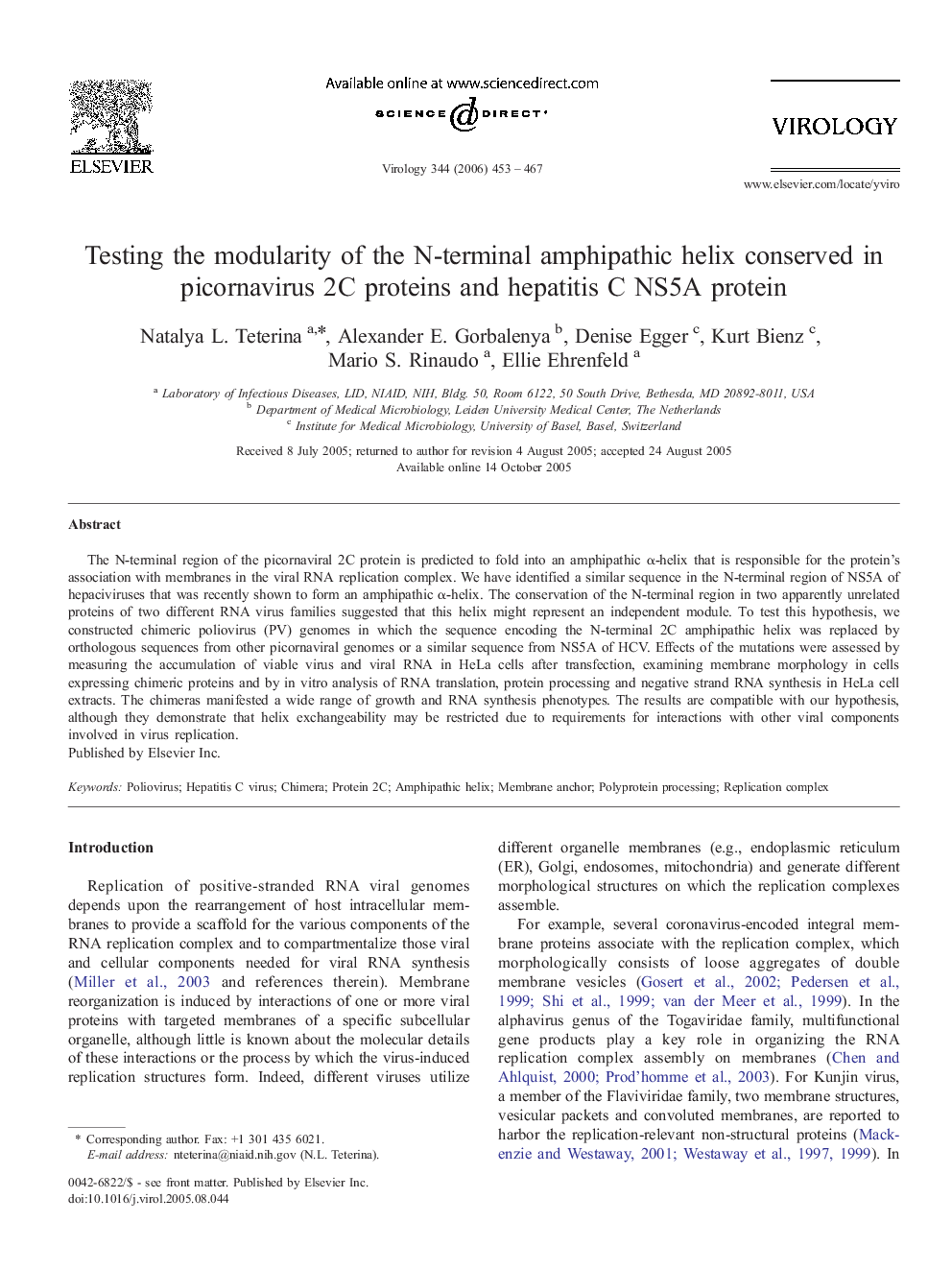| Article ID | Journal | Published Year | Pages | File Type |
|---|---|---|---|---|
| 3427050 | Virology | 2006 | 15 Pages |
The N-terminal region of the picornaviral 2C protein is predicted to fold into an amphipathic α-helix that is responsible for the protein's association with membranes in the viral RNA replication complex. We have identified a similar sequence in the N-terminal region of NS5A of hepaciviruses that was recently shown to form an amphipathic α-helix. The conservation of the N-terminal region in two apparently unrelated proteins of two different RNA virus families suggested that this helix might represent an independent module. To test this hypothesis, we constructed chimeric poliovirus (PV) genomes in which the sequence encoding the N-terminal 2C amphipathic helix was replaced by orthologous sequences from other picornaviral genomes or a similar sequence from NS5A of HCV. Effects of the mutations were assessed by measuring the accumulation of viable virus and viral RNA in HeLa cells after transfection, examining membrane morphology in cells expressing chimeric proteins and by in vitro analysis of RNA translation, protein processing and negative strand RNA synthesis in HeLa cell extracts. The chimeras manifested a wide range of growth and RNA synthesis phenotypes. The results are compatible with our hypothesis, although they demonstrate that helix exchangeability may be restricted due to requirements for interactions with other viral components involved in virus replication.
